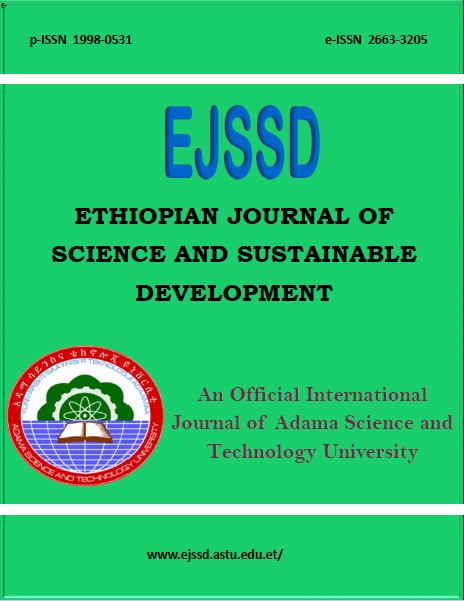Effects of Soil Fertility Management Practices on Phosphorus Adsorption–Desorption Dynamics of Acidic Soil, the Case of Gimbo District, Southwest Ethiopia
Abstract
This study examined the effects of various soil fertility management practices on the adsorption-desorption behavior of different phosphate fertilizers in acidic soils, which are known for their high phosphorus (P) fixation. Top surface soil samples (0-20 cm) from farmer fields were collected and incubated for 40 days, for batch type adsorption-desorption experiments. Adsorption data were obtained by equilibrating the respective soil samples for 24 h at room temperature with 30 ml of 0.01 M CaCl2, containing 0, 25, 50, 75, 100, and 125 mg kg-1 of applied external P as KH2PO4, NPSB (Nitrogen, Phosphorus, Sulfur and Boron blended fertilizer) and DAP (Diammonium Phosphate). The combined application of lime and compost significantly increased soil organic carbon, available P, and total P. Phosphorus adsorption varied by soil and fertilizer types, with the total mean performance ranked as NPSB > DAP > KH2PO4, except for the last two treatments in Michit soil. The combined application of lime and compost notably reduced external P requirements. In contrast, there was an increase in phosphorus desorption. Soil pH and organic carbon showed strong positive correlations with higher P desorption. Phosphorus adsorption and desorption capacities were influenced by combined application of different fertilizers and they varied across soils types and fertilizer sources. Desorbed amounts of phosphorus were increased following application of DAP, NPSB, and KH2PO4 fertilizers. It is suggested to conduct field experiments with the external phosphorus requirement (EPR) to validate the effectiveness of each fertilizers amount under real-world conditions.
Copyright (c) 2025 Ethiopian Journal of Science and Sustainable Development

This work is licensed under a Creative Commons Attribution 4.0 International License.

 Open Access
Open Access Print and Online ISSN
Print and Online ISSN Submit Your High-Quality Articles
Submit Your High-Quality Articles Higher Impact With Wider Visibility
Higher Impact With Wider Visibility Double Blinded Review Process
Double Blinded Review Process Join as Reviewer
Join as Reviewer